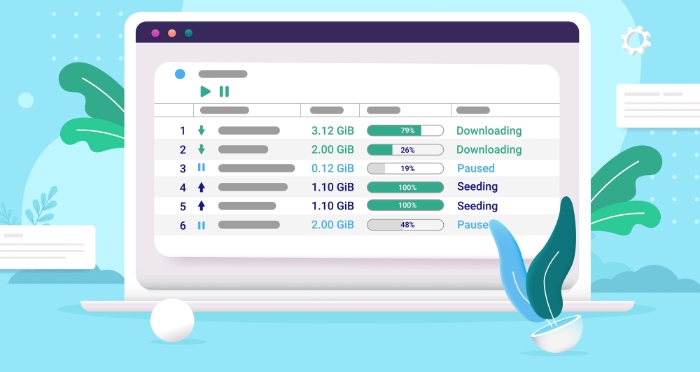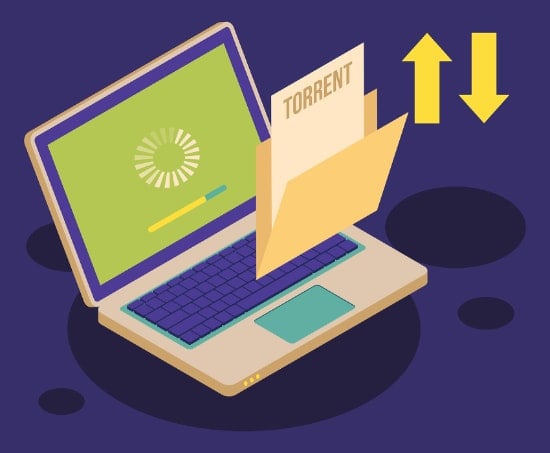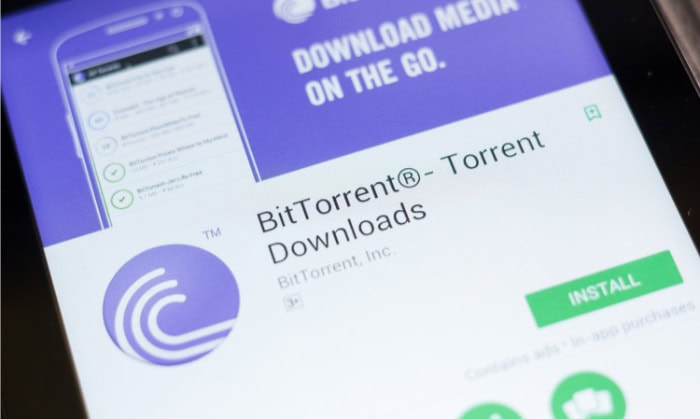What Is Torrenting? How It Works and Why It’s Popular

Peer-to-peer file sharing has transformed dramatically since the early days of Napster and Limewire. Today, torrenting represents a sophisticated system that powers countless legitimate file transfers across the globe.
By splitting files into tiny fragments and distributing them through a network of connected users, this technology has become an essential part of modern internet infrastructure.
Beyond its technical capabilities, torrenting offers a unique approach to file distribution. Rather than relying on expensive server networks, it creates a community of users who simultaneously download and share content.
This collaborative model has made it possible to distribute large files efficiently, from open-source software to public domain media.
Understanding the Basics
Torrenting operates through a sophisticated system that redefines traditional file sharing methods. This technology breaks away from conventional client-server models, introducing a more efficient and robust approach to distributing files across networks.
Core Technology
The BitTorrent protocol forms the foundation of modern torrenting systems. This protocol enables users to share large files without relying on a single centralized server.
Instead of downloading a file from one source, the protocol splits files into small pieces, allowing users to download different parts simultaneously from multiple sources.
Traditional downloading methods depend on a direct connection between a user and a server. For example, when downloading a movie from a streaming service, your device connects directly to their servers.
This can lead to slower speeds during peak times and potential server failures. In contrast, torrenting distributes this load across numerous users, creating a more stable and efficient network.
The decentralized nature of torrenting means that as more people download and share a file, the faster and more available it becomes. Each user who downloads a file can then become a source for others, creating a self-sustaining network that grows stronger with participation.
Key Components
Torrent files and magnet links serve as the starting points for any torrent download. A torrent file contains metadata about the files you want to download, including their names, sizes, and the structure of how they're broken into pieces.
Magnet links provide the same information but in a more convenient format that doesn't require downloading a separate file.
Trackers play a vital role in coordinating connections between users. These specialized servers maintain lists of who has what pieces of files and help users find each other.
Modern torrenting also supports trackerless systems through Distributed Hash Tables (DHT) and Peer Exchange (PEX), making the network even more resilient.
The torrenting ecosystem consists of three main participant types: seeders, leechers, and peers.
Seeders are users who have complete copies of files and share them with others.
Leechers are users who are still downloading files and don't yet have complete copies.
Peers refer to all participants in the swarm, regardless of their download status.
For example, imagine downloading a popular Linux distribution. You might connect to dozens of seeders simultaneously, each providing different pieces of the file.
As you download, you also share your completed pieces with other leechers, contributing to the overall health of the swarm. Once your download finishes, you become a seeder yourself, helping maintain the availability of the file for future users.
This collaborative approach creates a robust and efficient system where users both consume and contribute resources, ensuring files remain available without depending on expensive server infrastructure or single points of failure.
Technical Process

The inner workings of torrenting involve complex mechanisms that enable efficient file sharing across vast networks of users. These processes combine sophisticated file handling methods with dynamic network management to create a robust distribution system.
How Torrenting Works
The foundation of torrenting begins with file segmentation. Large files are broken down into small pieces, typically ranging from 256 KB to 4 MB each.
This segmentation allows for more efficient distribution and easier management of downloads. For instance, a 4 GB movie file might be split into thousands of smaller pieces, each capable of being transferred independently.
The simultaneous downloading process sets torrenting apart from traditional methods. Your torrent client connects to multiple peers, requesting different pieces of the file from each one.
This parallel downloading approach maximizes efficiency – while one peer might send you piece #1, another sends piece #500, and yet another sends piece #1000, all at the same time.
File verification ensures the integrity of downloaded content. Each piece comes with a unique hash value, which acts like a digital fingerprint.
As pieces arrive, your client automatically checks these hashes against the original values listed in the torrent file. If a piece fails verification, it's automatically re-downloaded from a different peer, ensuring the final file matches the original exactly.
Network Mechanics
Bandwidth allocation in torrenting follows sophisticated algorithms designed to optimize speed and fairness. Torrent clients continuously evaluate connection speeds with different peers, automatically adjusting how much bandwidth to allocate to each connection.
Fast, reliable peers receive more bandwidth allocation, while slower or inconsistent connections receive less.
Upload and download ratios play a crucial role in the health of torrent networks. Most clients track these ratios, showing how much data you've shared compared to what you've downloaded.
A ratio of 1.0 means you've uploaded as much as you've downloaded. Many private torrent communities require members to maintain minimum ratio requirements to encourage sharing.
Swarm dynamics represent the collective behavior of all peers sharing a particular file. As more users join a swarm, the availability and download speed typically improve.
The swarm automatically adapts to changing conditions – if some peers leave, others step in to fill the gap. This self-organizing nature creates a resilient system that can maintain high transfer speeds even as individual participants come and go.
The technical process also includes sophisticated peer selection algorithms. Your client constantly evaluates which peers offer the best connection speeds and most needed pieces.
It might connect to dozens or even hundreds of peers, but actively download from only a subset of them at any given time. This dynamic peer selection ensures optimal download speeds while preventing network congestion.
All these elements work together seamlessly in the background. Users simply see their downloads progressing, while the client software handles the complex tasks of piece management, peer connections, and data verification automatically.
Legitimate Applications

While torrenting often receives negative attention due to its association with unauthorized file sharing, numerous organizations and companies utilize this technology legally and effectively. The protocol offers substantial benefits for distributing large files and managing network resources efficiently.
Distribution Benefits
Torrenting provides remarkable cost advantages for organizations distributing large files. Traditional hosting methods require substantial server infrastructure, which becomes expensive as file sizes and download numbers increase.
With torrenting, the distribution costs are shared among users, significantly reducing the need for expensive server hardware and bandwidth.
Server load reduction represents another significant advantage of torrent-based distribution. During major software releases or updates, traditional download servers often struggle with high user demand, leading to slow downloads or complete server failures.
Torrenting naturally balances this load across the network of users, preventing any single point of failure and maintaining consistent download speeds even during peak periods.
The efficiency of large file transfers through torrenting surpasses traditional methods considerably. For example, a company releasing a 20GB software package can distribute it to millions of users without maintaining massive server farms.
As more users download the file, the distribution network becomes stronger and faster, creating a self-improving system that benefits all participants.
Common Legal Uses
Open-source software distribution represents one of the most prominent legitimate uses of torrenting. Linux distributions like Ubuntu and Debian regularly use torrent technology to distribute their operating systems.
This approach allows them to offer their software freely while maintaining quick and reliable downloads for users worldwide. The collaborative nature of torrenting aligns perfectly with the open-source philosophy of community participation and resource sharing.
Public domain content sharing through torrents helps preserve and distribute cultural heritage materials. Organizations like the Internet Archive use torrenting to share public domain books, movies, and music.
This method ensures these materials remain accessible even if the primary servers experience issues. For instance, collections of classic literature or historical recordings can reach interested audiences without straining the hosting organization's resources.
Game companies have also embraced torrenting for distributing updates and patches. Blizzard Entertainment, creators of World of Warcraft, implemented torrent technology in their game launcher to distribute updates more efficiently.
This implementation demonstrates how major companies can leverage torrenting to improve their service delivery while reducing infrastructure costs.
Many educational institutions utilize torrenting to distribute course materials and lectures. Large video files, software packages, and research datasets can be shared efficiently among students and researchers without overwhelming university networks.
This application shows how torrenting can support academic purposes while managing institutional resources effectively.
The technology also proves valuable for software developers distributing beta versions or large applications. Instead of maintaining expensive content delivery networks, developers can use torrents to share their programs with testers and users.
This approach allows small development teams to distribute their software globally without incurring prohibitive hosting costs.
Security Considerations

Torrenting requires careful attention to security measures, as the peer-to-peer nature of file sharing can expose users to various risks. Taking appropriate precautions helps protect both personal information and computer systems while using torrent networks.
Potential Risks
Malware and infected files pose significant threats in torrent networks. Malicious actors often disguise harmful software as popular content, including movies, games, or software applications.
These infected files might contain ransomware, trojans, or other harmful programs that can compromise computer systems. For example, a seemingly legitimate software download might actually contain hidden malware that activates once installed.
Privacy concerns extend beyond malware threats. During torrent activities, your IP address becomes visible to other participants in the swarm.
This exposure allows others to potentially track your downloading habits and location. Additionally, some organizations actively monitor torrent networks to identify users sharing specific content, particularly in regions with strict copyright enforcement.
Bandwidth monitoring by Internet Service Providers (ISPs) presents another consideration. Many ISPs track torrent traffic and might implement throttling measures, reducing connection speeds for users engaged in heavy torrenting activities.
Some providers even send warning notices to subscribers detected using torrent protocols, regardless of the content being shared.
Protection Methods
VPN usage provides essential protection for torrent users. A Virtual Private Network encrypts internet traffic and masks your real IP address, making it difficult for others to track your online activities.
Quality VPN services offer specialized features for torrenting, such as kill switches that automatically stop all downloads if the VPN connection drops, preventing accidental exposure of your real IP address.
Client security settings play a crucial role in safe torrenting practices. Modern torrent clients include various security features that users should configure properly.
These include options to block suspicious peer connections, disable DHT networks on private trackers, and limit connection attempts to verified sources. Properly configured encryption settings in your torrent client add another layer of security to your downloads.
File verification techniques help protect against corrupted or malicious downloads. Before downloading any torrent, users should verify the legitimacy of the source and check user comments or ratings.
Many torrent sites implement verification systems, such as skull icons or trusted uploader badges, to identify reliable sources. Additionally, comparing file hashes and checking digital signatures helps ensure downloaded files match their original versions.
Advanced protection methods include using sandboxed environments for running newly downloaded files and maintaining updated antivirus software. Some users create isolated virtual machines specifically for handling torrent downloads, providing an extra security barrier between potentially harmful files and their main system.
Regular system maintenance complements these protection methods. Keeping operating systems, torrent clients, and security software updated helps patch vulnerabilities that could be exploited through torrent connections.
Creating regular backups of important data provides additional protection against potential security breaches or system corruption.
Legal Framework

The legal aspects of torrenting create a complex web of regulations, rights, and responsibilities that vary significantly across different jurisdictions. While the technology itself is legal, its use often intersects with copyright law and intellectual property rights.
Copyright Issues
Intellectual property rights form the foundation of torrenting legislation worldwide. These rights protect creative works, software, and other digital content from unauthorized distribution.
Copyright holders maintain exclusive rights to distribute their content, and sharing protected materials without permission typically violates these rights. For example, sharing a recently released movie through torrents without authorization clearly infringes on the studio's copyright.
The distinction between legal and illegal content remains crucial for torrent users. Legal content includes open-source software, public domain works, and materials explicitly released for free distribution.
Linux distributions, Creative Commons licensed music, and content where creators have granted permission for sharing fall into this category. Conversely, unauthorized sharing of commercial movies, games, or software constitutes copyright infringement.
Regional variations in copyright law significantly impact torrent usage. Some countries enforce strict anti-piracy measures with substantial penalties for violations, while others maintain more lenient approaches.
For instance, Germany implements particularly stringent enforcement, often issuing substantial fines to users caught sharing copyrighted material. Meanwhile, other regions might focus primarily on large-scale distributors rather than individual users.
Compliance Measures
Identifying legal torrent sources requires diligence and attention to detail. Legitimate platforms clearly state their authorization to distribute content.
Official software repositories, academic institutions, and recognized content creators often use torrents for authorized distribution. Users should verify the legitimacy of torrent sites and cross-reference content permissions before downloading.
User responsibilities extend beyond simply avoiding copyrighted content. Torrent users must actively participate in maintaining legal compliance by checking content licenses, respecting distribution terms, and avoiding redistribution of protected materials.
Internet Service Provider policies reflect both legal requirements and business practices regarding torrent traffic. Many ISPs implement specific policies for peer-to-peer file sharing, including:
- Traffic monitoring systems to detect torrent activity
- Bandwidth throttling during peak usage periods
- Graduated response systems for copyright violations
- Data retention policies for user activities
Some providers send warning notices to subscribers detected sharing copyrighted content, while others might terminate service after repeated violations. Users should review their ISP's terms of service regarding peer-to-peer file sharing and consider these policies when planning their torrent activities.
The enforcement landscape continues to adapt as technology evolves. Copyright holders employ various methods to protect their interests, from automated monitoring systems to legal action against individual users.
Some regions require ISPs to maintain logs of user activities, while others implement three-strike systems leading to service termination for repeat offenders.
To maintain compliance, users should:
- Research content licensing before downloading
- Document permissions for shared materials
- Monitor ISP communications regarding network usage
- Stay informed about local copyright regulations
- Use only verified, legal torrent sources
Conclusion
Torrenting technology represents a powerful file-sharing method that continues to shape modern internet usage. From distributing large software packages to enabling efficient content delivery, its applications extend far beyond casual file sharing.
Legal implementations by companies, educational institutions, and content creators demonstrate its value as a legitimate distribution tool. However, successful torrenting requires careful attention to security measures, including VPN usage and proper client configuration.
Users must also remain mindful of copyright laws and regional regulations while accessing content through torrent networks. By following proper security protocols and respecting legal boundaries, torrenting serves as an effective solution for authorized file distribution needs.


